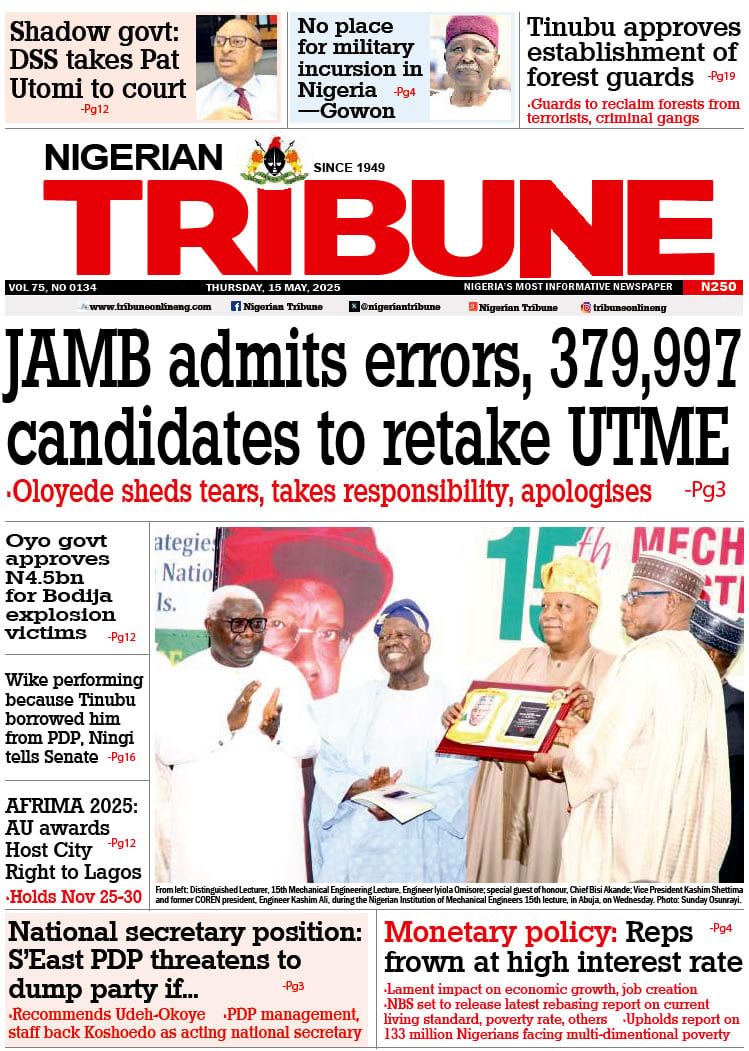THE Nigeria Sovereign Investment Authority (NSIA) says its assets has grown to N617.698 billion in 2018 from N533.882 billion recorded in the previous year. This is even as the group has adopted the International Financial Reporting Standard 9 (IFRS9).
Presenting the groups financial scorecard and overall activities to business editors in Lagos over the weekend, Managing Director NSIA, Mr. Uche Orji stated that the authority the total comprehensive income for the year amounted to N44.337 billion from N41.827 recorded in 2017.
The Authority was established to receive, manage and invest the excess
funds from the country’s sale of crude oil in a diversified portfolio of medium and long-term investments.
According to Orji NSIA was setup by the Nigeria Sovereign Investment Authority Act, which was signed in May 2011and was allocated an initial US$ 1billion in seed capital.
The Authority domiciled in Nigeria, commenced operations in October 2012.
NSIA’s Investment securities available for sale are: US treasury notes;
Private equity investments; Nigeria Infrastructure Debt Fund ; Hedge fund managers and Fixed income products.
To actualise its mandate, the Authority has established three separate “ring-fenced’ funds. They include Stabilisation Fund (SF), Future Generations Fund (FGF) and Nigeria Infrastructure Fund (NIF).
The Managing Director further stated that the consolidated and separate financial statements of Nigeria Sovereign Investment Authority have been prepared in accordance with International Financial Reporting Standards (IFRS) on Interim financial information (IAS 34), including
International Accounting Standards and Interpretations issued by the International Financial Reporting Interpretations Committee (IFRIC) applicable to companies reporting under IFRS.
The Nigeria Sovereign Investment Authority is an Investment institution of the Federation set up to manage funds in excess of budgeted hydrocarbon revenues. As a Fund, the NSIA invests in real and financial assets including stocks, bonds, real estate as well as alternative investments.
NSIA’s ownership structure is comprised of all three tiers of government spanning the Federal, State and Local Government. Aside from the initial seed capital of $1 billion, the NSIA Act 2011 expressly provides for further capital contribution funded largely from the excess proceeds of crude oil sale.
For each tranche of contribution, the Office of the Account General provides an apportionment schedule which details the capital distribution structure using an approved ratio.
With a global outlook, the Group’s strategy for managing risks is to understand risk within the invested universe and the externalities that can affect this, with the aim of monitoring, controlling and mitigating against undesired events.
The Group has adopted, wherever possible, recommended best practice in the identification, evaluation and cost effective control of risks to ensure, as far as possible, that they are eliminated or reduced to a level that is acceptable to the Authority, as stated in its 2018 annual report.






